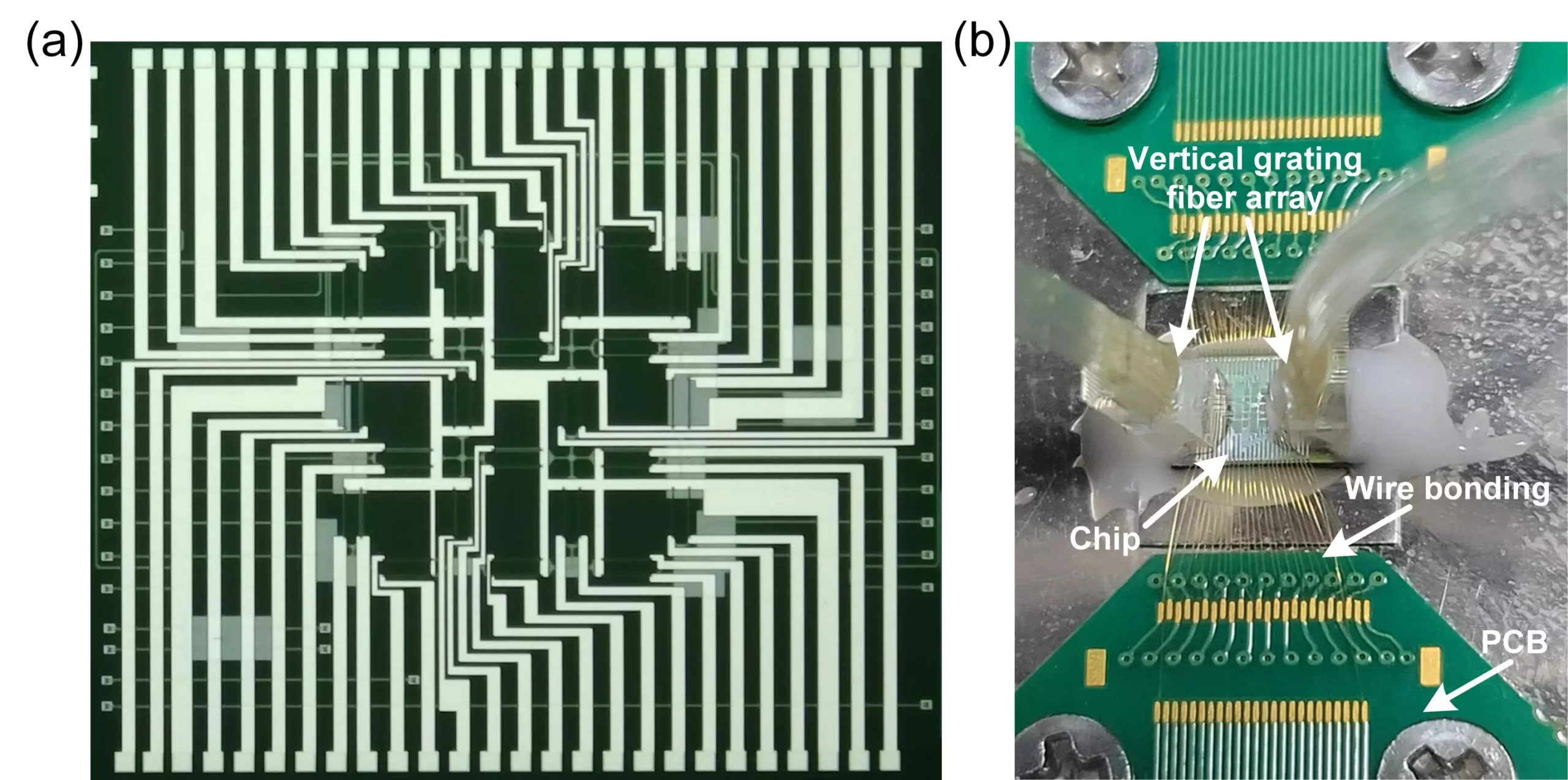Researchers at Huazhong University of Science and Technology in China have made a significant advancement in the field of optical chip technology. They have developed an easy-to-use optical chip that can self-configure to achieve various functions. This breakthrough has the potential to enhance optical neural networks, which are used in a wide range of data-heavy applications such as image classification, gesture interpretation, and speech recognition.
Previously, photonic integrated circuits could be reconfigured after manufacturing, but they required users to understand the internal structure and principles of the chip. Individual adjustment of basic units was necessary, making it a complex process. However, the new chip developed by the researchers can be treated as a black box. Users no longer need to understand the internal structure; they only need to set a training objective, and the chip will self-configure to achieve the desired functionality based on the input and output. This simplifies the process and makes it more accessible to a wider range of users.
The researchers describe their new chip as being based on a network of waveguide-based optical components called Mach-Zehnder interferometers (MZIs) arranged in a quadrilateral pattern. This chip can self-configure to perform optical routing, low-loss light energy splitting, and matrix computations used in the creation of neural networks. The chip’s design allows for both feedforward and feedbackward propagation, which is crucial for matrix operations in optical neural networks. This design approach sets it apart from previous chips and opens up new possibilities for larger-scale on-chip programmable waveguide networks.
To achieve its self-configuring functionality, the chip can be reconfigured by adjusting the voltages of electrodes. This manipulation creates different light propagation paths within the quadrilateral network. The researchers integrated a gradient descent algorithm into the chip, which significantly accelerates the convergence rate of the cost function. This function gauges the accuracy of the network with each training iteration. The chip updates the voltages of all adjustable electrodes after each training iteration, improving the convergence rate further. These improvements make the training process faster and more efficient.
The researchers successfully demonstrated the chip’s capabilities by performing positive real matrix computation, which had never been achieved before in a quadrilateral MZI network. The error between the chip’s training results and the target matrices was minimal, confirming the feasibility of this approach. They also demonstrated optical routing and low-loss optical power splitting. Optical routing efficiently routes signals between equipment in data centers, reducing latency and power consumption. Low-loss optical energy splitting enables the simultaneous processing of input signals, enhancing overall performance.
The researchers are already envisioning the future potential of their chip. With further development, it may be possible to achieve optical functions comparable to those of field-programmable gate arrays (FPGAs). FPGAs are electrical integrated circuits that can be reprogrammed to perform any desired application after manufacturing. By expanding the matrix operation capabilities of the chip and exploring other applications of matrix computing, the researchers hope to unlock even greater potential in the field of optical chip technology.
The development of a self-configuring optical chip represents a major breakthrough in the field. This chip’s ability to perform various functions without requiring users to understand its internal structure brings optical neural networks and other data-heavy applications within reach of a wider audience. With its unique design and optimization techniques, the chip demonstrates not only feasibility but also the potential for future development. As researchers continue to unlock the capabilities of this technology, the possibilities for optical chip applications will only continue to expand.



Leave a Reply